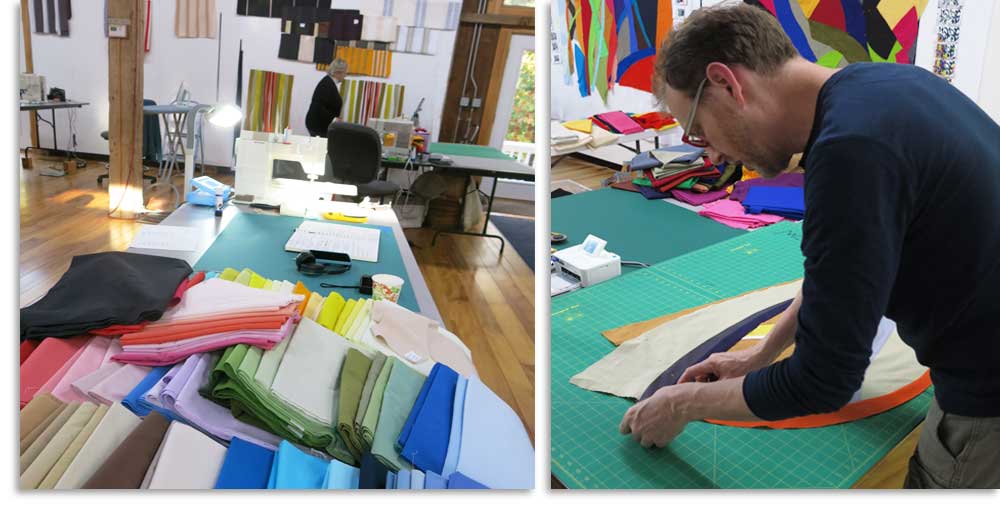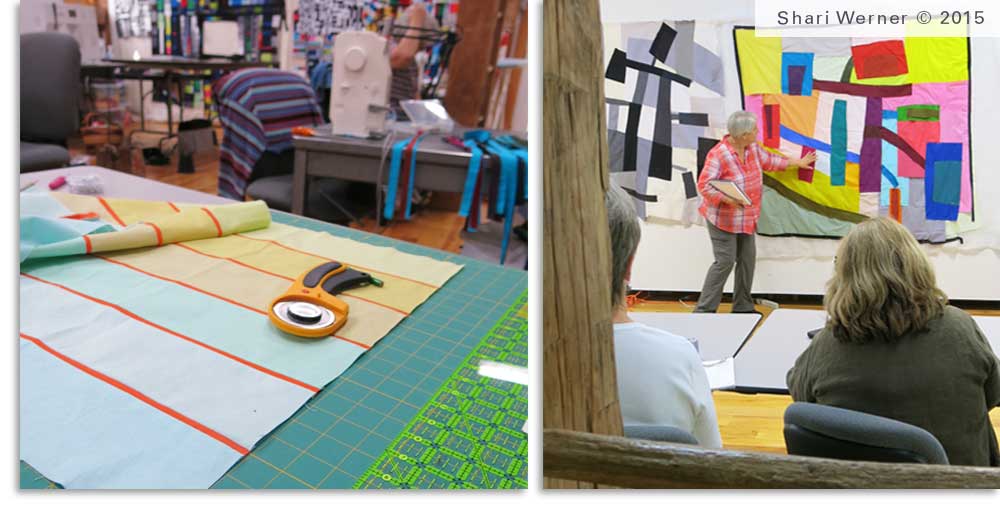

Nancy currently offers 13 quilt-making workshops starting at intermediate level and graduating to very advanced. All workshops are 2-week classes and are best taken sequentially. Each workshop builds on the one before it as all classes are taught as art classes. They are all deeply embedded in classical art/design concepts. Figure/ground composition will be emphasized in every single class. Each student needs to be fluent in machine-piecing for all workshops.
• Note: Nancy teaches workshops at various venues, which are listed on her itinerary.
• Please note: updates are being made to the class descriptions and supply lists. Updated information will be uploaded soon.
1. The NEW STRIP-PIECING & RESTRUCTURING: PARTS I & II (intermediate)
2. LINES, CURVES, SHAPES & FIGURE/GROUND COMPOSITION: PARTS I & II (intermediate)
3. The NEW SETS & VARIABLES: PARTS I & II (intermediate)
4. IMPROVISATIONAL EXERCISES: PARTS I & II (intermediate)
5. IMPROVISATIONAL EXERCISES: PARTS III & IV (intermediate-advanced)
6. PUSHING COMPOSITION #1 (intermediate-advanced)
7. PUSHING COMPOSITION #2 (intermediate-advanced)
8. The NEW CREATIVE STRETCHES in COMPOSITIONAL EXERCISES (advanced)
9. OVERALL & SPARE FIGURE/GROUND COMPOSITION (advanced to very advanced)
10. The NEW POTPOURRI I & II: Challenging Compositional Exercises (advanced to very advanced)
11. ITERATIONS: PART I (very advanced)
12. WORKING IN A SERIES (very advanced)
13. MASTER COMPOSITION (very advanced)
• Note: Nancy teaches workshops at various venues, which are listed on her itinerary.
• Please note: updates are being made to the class descriptions and supply lists. Updated information will be uploaded soon.
1. The NEW STRIP-PIECING & RESTRUCTURING: PARTS I & II (intermediate)
2. LINES, CURVES, SHAPES & FIGURE/GROUND COMPOSITION: PARTS I & II (intermediate)
3. The NEW SETS & VARIABLES: PARTS I & II (intermediate)
4. IMPROVISATIONAL EXERCISES: PARTS I & II (intermediate)
5. IMPROVISATIONAL EXERCISES: PARTS III & IV (intermediate-advanced)
6. PUSHING COMPOSITION #1 (intermediate-advanced)
7. PUSHING COMPOSITION #2 (intermediate-advanced)
8. The NEW CREATIVE STRETCHES in COMPOSITIONAL EXERCISES (advanced)
9. OVERALL & SPARE FIGURE/GROUND COMPOSITION (advanced to very advanced)
10. The NEW POTPOURRI I & II: Challenging Compositional Exercises (advanced to very advanced)
11. ITERATIONS: PART I (very advanced)
12. WORKING IN A SERIES (very advanced)
13. MASTER COMPOSITION (very advanced)